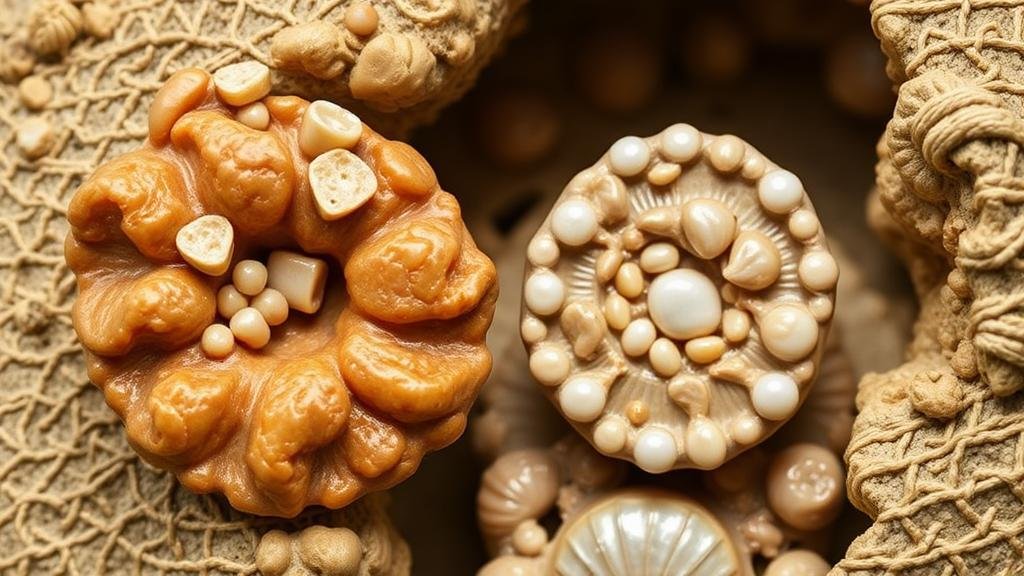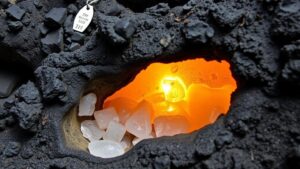Finding the Rarest Pearls: Fossilized Specimens in Ancient Marine Sediments
Finding the Rarest Pearls: Fossilized Specimens in Ancient Marine Sediments
For rockhounds and mineral collectors, the thrill of discovering rare geological specimens can be deeply rewarding. Among these treasures, fossilized pearls found in ancient marine sediments stand out for their rarity and unique formation processes. This article explores the characteristics, formation, and collecting strategies for these extraordinary specimens.
The Formation of Fossilized Pearls
Fossilized pearls, often referred to as fossil pearls, are remnants of organic material that have undergone a complex fossilization process. Unlike traditional pearls formed within living mollusks, fossilized pearls emerge from ancient marine sediments, captured through natural geological processes. The formation stages include:
- Nucleation: Similar to how modern pearls are formed, fossil pearls begin with an initial nucleation event, often involving a grain of sand or another irritant.
- Layer Accumulation: Over thousands to millions of years, layers of calcium carbonate are deposited around the nucleating object, gradually forming a pearl-like structure.
- Fossilization: Then, the mollusk dies, and the environmental conditions lead to the mineralization of the layers, transforming organic material into fossilized remains.
According to geologists, the time frame for these processes can range from a few thousand to millions of years, depending on the sedimentation rate and environmental conditions.
Characteristics of Fossilized Pearls
Fossilized pearls can be recognized by several distinct features:
- Composition: Typically composed of aragonite and calcite, fossil pearls can vary greatly in mineral content, influencing their color and luster.
- Size and Shape: Fossil pearls can vary in size, with some measuring just a few millimeters, while others can exceed several centimeters across. Their shapes can range from spherical to irregular forms.
- Striations: Unlike modern pearls, fossil pearls often exhibit striations or growth lines that indicate their formation over time, providing clues about their age and origins.
Scientists have identified fossil pearls dating back over 300 million years, providing valuable insights into ancient marine environments.
Locating Fossilized Pearls
Finding fossilized pearls requires strategic planning and knowledge of geological formations. Here are practical tips for collectors:
- Research Locations: Focus on regions with ancient marine sediments, such as limestone deposits, marine terraces, and fossiliferous clays. Notable locations include parts of the United States, Europe, and Australia.
- Understand Geological Layers: Familiarize yourself with the local geology. Fossil pearls are often found in sedimentary rock layers associated with ancient marine settings. Look for sedimentary structures that indicate historical water presence.
- Use Geological Tools: Equip yourself with tools such as a rock hammer, chisel, and proper safety gear. This will not only enhance your efficiency but also ensure your safety during field activities.
The Market for Fossilized Pearls
The market for fossilized pearls continues to grow among collectors and enthusiasts. Their rarity and unique attributes contribute to their desirability. While sizes and quality vary, prices for fossil pearls can range widely:
- Small specimens can be acquired for as little as $20-$50.
- Medium to large specimens, particularly those with exceptional clarity and color, may fetch between $100 and $500.
- Extremely rare or historically significant fossil pearls can command even higher prices, reaching thousands of dollars.
Collectors should ensure they purchase from reputable sources to avoid counterfeit specimens that may mimic natural fossils.
Conclusion and Actionable Takeaways
Fossilized pearls are a fascinating intersection of geology, paleontology, and artistry, offering collectors a glimpse into the ancient marine world. Understanding their formation, characteristics, and proper collection techniques enhances the rewarding experience of sourcing these rare specimens. For those eager to dive into the world of fossil collecting:
- Start by researching local geology to identify potential sites for hunting fossilized pearls.
- Network with other collectors and attend gem and mineral shows to learn more and share information.
- Document your finds meticulously, noting the location and geological context to aid in future research and collection development.
With patience and perseverance, rockhounds can uncover these natural wonders, contributing to both their personal collections and the broader understanding of our planets geological history.



